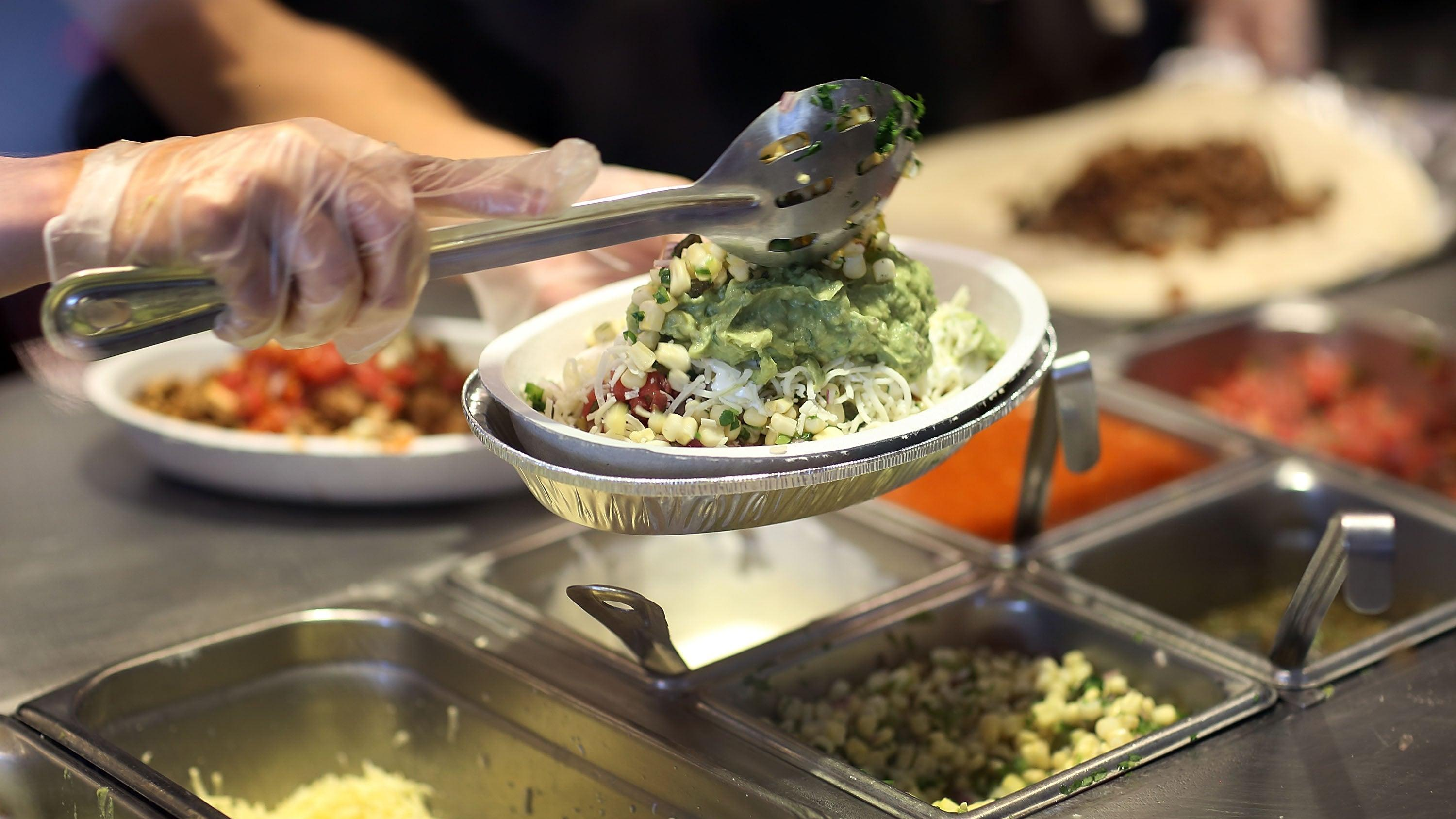Chipotle Is Trying To Do It All
The burrito chain is taking inspiration from other fast food joints to expand its business.
Here's a little primer on food industry lingo: There's fast food, and then there's fast casual. The former is exactly what you're picturing, a McDonald's drive-thru or a Domino's counter, any place designed for grab-and-go convenience. There might be a place to sit and dine in, but the restaurant isn't focused on keeping you there—rather, it's all about efficiency.
Fast casual, on the other hand, combines the speed and convenience of fast food with a greater focus on the in-store experience. There are no servers, just counter service, but the design of the restaurant intends to keep you around for a little while. Prices and quality of menu items tend to be slightly higher, and for years these types of chains existed without drive-thru or delivery. But over the last few years, the scope of fast casual dining has changed, and one well-known restaurant is leading the charge.
A brief history of Chipotle’s influence on fast casual dining
While there's some dispute as to the exact origins of the fast casual concept, many sources, like this Harvard report, credit Chipotle's debut in 1993 as the birth of a new model combining high-quality ingredients and dining with the "fast" part of fast food. And a huge part of what Chipotle popularized was the customer-facing assembly line that allowed for instant customization and provided a transparent view of the operation. (Chipotle didn't invent this concept, however—that was Subway.) All told, the assembly line gave the appearance of a fresher, "specialty" meal.
Another innovation was the sale of alcohol at nearly all Chipotle locations. From its inception Chipotle has included margaritas and beer on its menus, Thrillist reports, and has kept the tradition alive across the decades. That adds another layer of specialty service that makes customers want to stick around instead of just grabbing something to go—and it's a model that's since been replicated at chains like Shake Shack, Noodles & Company, and Smashburger.
It was because of an investment from McDonald's in 1998 that the chain was able to grow, Forbes reports, but McDonald's divested in 2006 without leaving behind much influence on how the brand operated. Now, however, in response to a raise in digital sales during the pandemic, Chipotle is adopting some of the same strategies that have kept major fast food restaurants thriving for years.
The Chipotlane and Chipotle’s focus on digital ordering
One of the most noticeable changes to Chipotle's future restaurant design is the introduction of the Chipotlane, the chain's version of a drive-thru. There are currently 300 stores with a Chipotlane, Insider reports, and 80% of all new stores opening this year will have one. Unlike traditional drive-thrus, the lanes are only for picking up mobile orders customers have already placed. You have to first download the Chipotle app, then you can customize your order through your phone instead of shouting out your toppings via an intercom system.
According to Insider, Chipotle stores discovered through the pandemic that this way of ordering actually resulted in higher margins because the method increased the speed with which workers could fulfill orders, going off written instructions without the natural lulls that come from a person mulling over their many options in person.
In 2021, digital orders made up nearly half of all Chipotle orders, so it makes sense that the brand placed more focus on those innovations. But now, Chipotle needs to balance those investments with maintaining the fast casual concept that made it popular in the first place. As people return to the office and start shedding some of the practices adopted during the pandemic, Chipotle is seeing in-store traffic on the rise, up 22% last quarter as digital sales dipped down to 36% of all orders.
And Chipotle seems to be taking these cues. In-store promotions have recently returned, including the resurgence of the previously annual Halloween Boorito deal that offers free burritos to any customers who come to the store in costume. It's a delicate balance to try to go all in on both fast food and fast casual; for one thing, it requires more training for employees so that they can keep up with Chipotle's new "we can do it all" mentality. But with a goal of operating 7,000 North American locations before the end of the year, Chipotle had better figure out fast whether this new system works.
